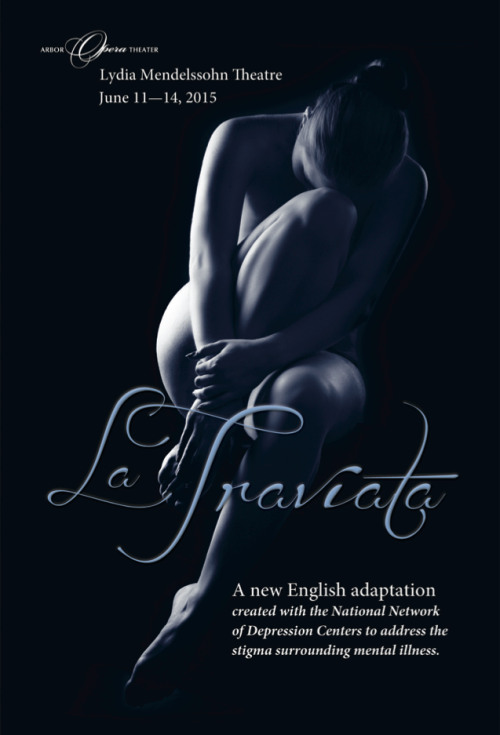Only old fogies go to the opera, right? And young guys trying to impress a girl with how intelligent and posh they are. Right? And why? Because it’s booooooring, and not relevant, unless you study music. Or history. Or music history. Or the Looney Tunes. Right?
Well, do I have news for you. The Metropolitan Opera has gone international with their Live in HD series show in movie theaters, and they are including famous Tony award winning directors and Broadway actors in some of the shows. Professional opera has been trying to recruit a new audience through reaching out into new spaces, and re-interpreting shows in modern scenarios, like the Las Vega “Rat Pack” version of Rigoletto or the 50s diner version of Cosi Fan Tutti, or even the Star Trek version of “Abduction from the Seraglio.” I know of classic operas with new translations of the libretto, but they keep the same plotline and story. Of course, there are also new operas, new approaches to what is an opera, rock operas, heavy metal operas and even a country-western-horror mashup opera.
As far as I know, no one has, however, taken this as far as the Arbor Opera Theater did last week with their new interpretation of La Traviata.
“Lydia Mendelssohn Theatre, June 11-14, 2015. La Traviata, a new English adaptation created with the National Network of Depression Centers to address the stigma surrounding mental illness.”
Ah, now it makes sense. I bet some of you were wondering why on earth I was talking about opera, when I usually talk about healthcare and/or technology. This is why. (Well, except, I do love opera, in case you haven’t guessed.) The best operas have traditionally taken on difficult and edgy topics, challenged assumptions and cultural norms, poked ridicule at the establishment, and generally done what popular culture does best: Explore, question, and hopefully transform the present. La Traviata, when it was first written, told the story of bias against women of “ill-repute,” a.k.a. courtesans or prostitutes. The rumor is that Verdi had his own personal reasons ( special friend, perhaps) for suggesting that people should be a bit more tolerant, and trying to foster a sense of compassion to counter the stigma. This brought us La Traviata, and generations of viewers who weep at the end as the “courtesan with a heart of gold” fails to survive largely due to the classic public health indicators of low socioeconomic status and lack of access to healthcare. Stigma of all sorts is a contributing public health issue, with over twelve THOUSAND articles on the topic in MEDLINE. Almost half of those relate directly to mental health or mental illness, and the rest mostly connect tangentially, through sexual preference, victim status or survivorship, gender identity, and disease diagnosis status (HIV, cancer, leprosy, and more).
This new and revised vision of La Traviata kept the wonderful music, the names of some of the characters, and the stigma, but changed the plot and storyline and the source of the stigma. The star of the new La Traviata remains Violetta, but now Violetta suffers from mental illness. Violetta is a beautiful young woman, self-medicating in a struggle to manage her symptoms, without her friends realizing that it is an illness and could be treated. As with so many in real life who struggle to alleviate their own misery without understanding the root cause, her strategies for self-medication complicate the challenges instead of helping. Those familiar with the story of La Traviata know to expect a death scene at the end, but our Violetta dies not of tuberculosis and poverty, but misunderstanding and a drug overdose.
When I first heard about this production, the vision of interpreting the story around depression and bipolar and stigma, actually partnering with the National Network of Depression Centers, I could not have been more excited. I was thrilled with the concept, and could only wait to see the show because there were no previews online! Not everyone felt the way I did. At the performance, I overheard people expressing some reluctance. Would it be the show that they loved already? How could this work? Did it really make sense to make this big of a change? At the first intermission, some were still hesitant, but by the final intermission the staunchest resistance near me had converted to, “I’m surprised! This really works!”
It did, and does succeed as a story. Arbor Opera Theater is not the Lyric or the Met. We don’t have the star performers, the grand sets, the enormous stage. Despite that, I found myself lost in the story and music. The New Orleans setting was a perfect choice for the context of the story. The sex scenes were dynamic enough to make me feel like a voyeur. Several audience members commented on the strong performance by Augustin (Drake Dantzler) as Violetta’s youthful true love. The arguments with her lover’s father, Senator Germont (Evan Brummel, who acts brilliantly as well as beautifully sculpting language with the musical notes), successfully portrayed him with rich subtlety as a villain operating from the best of intentions. People near me said, “I could have done the same thing,” and “I know parents like that.” His repentance at the end, in the dream sequence, made me wish it was not a dream. When the final scene approached, my reaction was, “Oh, no! She’s so tiny, she doesn’t have the body mass to offset the meds!” I had willingly suspended disbelief, and bought into the performance. A part of me believed that Violetta (Kacey Cardin) was the tiny, sexy, blonde woman with the big voice, tough and fragile at the same time.
The actual singing soared, and for the most part the libretto succeeded in both revealing the story and supporting the singers. There were a few rough spots in the libretto that didn’t quite lay well for the voices and which were jarring to the audience, disrupting the flow of the story. Perhaps a bit of polish, a touch more lyricism, and a bit of rhyme and poetry would address that? Portions of the libretto seemed appropriate for the story, but inappropriate for the character actually singing them. I’d want to touch base with a greater variety of audience members to test out how it worked. That there were moments where the language was a distraction from the story was made evident in audience comments in the hallway. “What does that word even mean?” “Did she have to use that kind of language?” Perhaps that was just the older portion of the crowd? I’m not sure. Perhaps I’m just nitpicking.
Ultimately, I came away wishing strongly to see this performed over and over again, in many interpretations, in many theaters. I want to see this performed by the Met Opera in their Live in HD series. I want to take the train to Chicago to see it at the Lyric. I am deeply grateful to have overheard one of the cameramen at the Saturday performance say that there were plans for this La Traviata to be broadcast on Detroit Public Television in the future. I hope desperately that this means it will also be viewable online, because I want to go out to all my online healthcare communities and get people to watch it, or at least watch excerpts and highlights. I want to spread the word, and engage a much broader audience around this issue, stigma, and this story.
I also found myself asking, why don’t we do this for other important health care and social advocacy stories? Can we take what Shawn McDonald has done with La Traviata as a model to explore contemporary issues? Take classic operas, plays, perhaps Shakespeare, and more. Make them modern and relevant to a contemporary audience, give them new life, and at the same time support the important causes and issues of our day, the challenges and heartaches that shape our society. It would be a far lesser shift to perhaps have Violetta dying of cancer. Could King Lear be rewritten to explore workplace social dynamics, and the need for positive organizational dynamics? What about a new work taking David Copperfield and setting it in India or China? Could Ophelia in Hamlet be recovering from the trauma of clitoridectomy? Rewrite Figaro as casting couch dynamics in Hollywood. Would it be possible to mashup Handel’s Orlando with Virginia Woolf’s surreal Orlando to explore transgendered life? In Rigoletto, instead of being a hunchback, could Triboulet be a person with facial difference? Take L’Elisir d’Amore and rewrite it as a vaccine story. The possibilities are endless.
After the exhilaration and emotional roller coaster of watching the AOT La Traviata Saturday night, I came home and walked the dog. It was dark. The streets were empty. There was a hollowness in the silence that seemed to echo louder because of where I’d been so recently. It felt … appropriate. Let Violetta’s death, the real Violettas of our world, have meaning. Let us move from these hollow spaces to open spaces that show stigma for what it really is.
Update June 18, 2015: Corrected the name of AOT from Ann Arbor Opera Theater to Arbor Opera Theater. Corrected attribution of images from NNDC to Amanda Sullivan.









Pingback: “La Traviata” Adaptation a Risk Worth Taking – National Network of Depression Centers